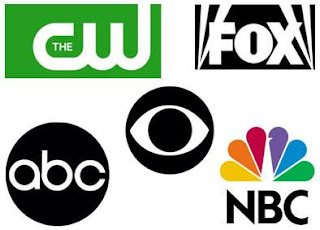Television's biggest selling season for ads has ended for the Big 5 networks with neither a bang nor a whimper: Cursed to coincide with disappointing economic news, their upfronts sales roughly equaled last year's take of $9.2 billion.
While cable is in the midst of its upfront sales, the networks finished last week. CBS, ABC and NBC earned slightly more than they did last year, according to people familiar with the sales. Fox and the CW were essentially flat.
Still, steady sales may feel like good news considering their backdrop: Networks had to sell their fall shows amid rampant economic uncertainty -- and with General Motors, a major advertiser, aggressively haggling over prices.
"I don't think there's anything abnormal about this year," said Brad Adgate, senior vice president of research at Horizon Media Inc. "It's just kind of business as usual."
To which the networks might say: Whew.
Cable networks are expected to out-earn the networks -- as they did last year -- when they complete their sales in the next two weeks.
"I don't foresee broadcast networks ever taking back the crown from cable," said Michael Parent, senior vice president of national broadcast for the media firm TargetCast.
Even if networks didn't beat last year's total sales, they also didn't slump back to the 2010 numbers, when the pull of recession limited sales to $8.5 billion. Staying even is an accomplishment, given the background static.
CBS, the most-watched network overall, led with $2.7 billion, up from last year's $2.6 billion.
ABC was up to $2.5 billion, up from $2.4 billion the year before.
Fox, the top-rated network in the advertiser coveted 18-49 demographic, sold $1.9 billion to $2 billion, compared to about $2.1 billion last year. It has fewer ads to sell because its primetime is two hours instead of CBS, ABC, NBC's three.
NBC came in at about $1.8 billion, up from $1.7 billion the year before, partly on the strength of its hit singing competition "The Voice."
The CW, the newest and lowest-rated network, earned about $420 million, on par with last year. It has two hours of primetime programming Monday through Friday.
Top-rated Spanish station Univision, which often beats one or more of the networks on a given night, is still in the midst of its upfront sales. It has sold more than half of its available ad space and is ahead of last year's pace.
Advertisers set prices based on CPMs, the cost of reaching 1,000 people. All of the English-networks had CPM increases of 6 to 9 percent, despite pressure from GM to limit increases. The company spent spending about $1.1 billion on TV advertising in 2011, making it the third-largest U.S. TV advertiser after Procter & Gamble and AT&T, according to AdAge.
Adding to that pressure was a May jobs report from the Bureau of Labor Statistics that found that only 69,000 jobs were added for the month, the weakest growth in a year. Unemployment ticked up for the first time since last June, hitting 8.2 percent.
The situation was even more bleak for countries that use the euro: Their collective unemployment rate hit its highest level on record, 11 percent. That doesn't directly affect U.S. TV viewers, but does infect the global economy.

